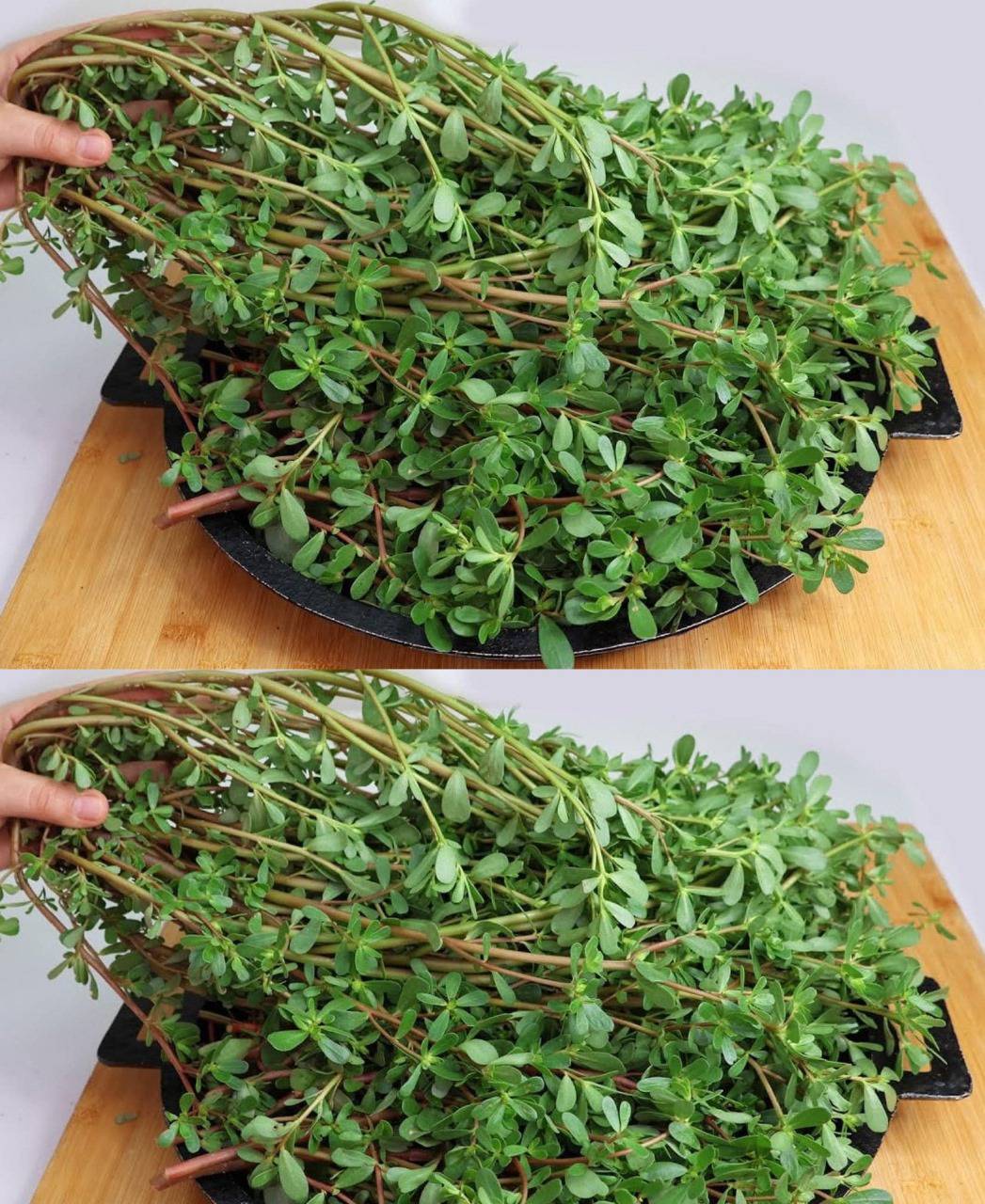In the vast world of edible plants, some treasures often go unnoticed, hiding in plain sight. Purslane (Portulaca oleracea), commonly dismissed as a mere garden weed, is one such gem. With its succulent leaves and slightly tangy flavor, purslane has been a staple in various cuisines worldwide, celebrated not only for its taste but also for its impressive nutritional profile.
A Brief Overview of Purslane
Purslane is a hardy, low-growing succulent that thrives in a variety of environments, from garden beds to sidewalk cracks. Its fleshy, spoon-shaped leaves and reddish stems are characteristic features. While many gardeners consider it a nuisance, several cultures have long recognized its culinary and medicinal value.
Nutritional Powerhouse
Beyond its culinary versatility, purslane is a nutritional powerhouse. It boasts high levels of omega-3 fatty acids, particularly alpha-linolenic acid, which is uncommon in terrestrial plants. Additionally, it’s rich in vitamins A, C, and E, as well as essential minerals like magnesium, calcium, potassium, and iron. The plant also contains antioxidants, including beta-carotene and glutathione, which help combat oxidative stress in the body.
Culinary Uses Across Cultures
Purslane’s slightly sour and salty taste makes it a versatile ingredient in various dishes:
- Salads: In Greek cuisine, purslane is often combined with feta cheese, tomatoes, onions, and olive oil to create refreshing salads. Its crisp texture adds a delightful crunch.
- Stews and Soups: In Turkish and Middle Eastern cuisines, purslane is cooked with tomatoes, onions, and spices, often served with yogurt. Its mucilaginous quality helps thicken soups and stews.
- Sautéed Dishes: In Mexican cuisine, known as “verdolagas,” purslane is sautéed with garlic and chilies or cooked with pork in green salsa.
- Pickling: Some cultures pickle purslane, preserving its tangy flavor for later use.
Foraging and Harvesting
Purslane is commonly found in gardens, lawns, and even urban areas. When foraging, it’s crucial to ensure the plant hasn’t been exposed to pesticides or pollutants. Identifying purslane is relatively straightforward: look for its fleshy leaves, reddish stems, and small yellow flowers. However, caution is advised to avoid confusing it with similar-looking plants like spurge, which is toxic. Spurge can be distinguished by its milky sap and thinner stems.
Growing Purslane
For those interested in cultivating purslane, it’s an easy plant to grow. It thrives in well-drained soil and full sunlight. Seeds can be sown directly into the garden after the last frost. Once established, purslane requires minimal care and can be harvested throughout the growing season.
Incorporating Purslane into Modern Diets
With a growing interest in plant-based diets and sustainable food sources, purslane offers an excellent addition to modern meals:
- Smoothies: Adding a handful of fresh purslane to smoothies can boost their nutritional content without altering the flavor significantly.
- Pesto: Substituting or combining purslane with basil in pesto recipes introduces a unique taste and texture.
- Tacos and Wraps: Use fresh purslane leaves as a topping for tacos or as a filling in wraps for added crunch and nutrition.
- Omelets and Frittatas: Incorporate chopped purslane into egg dishes for a nutrient-rich breakfast.
Health Considerations
While purslane is generally safe for consumption, it’s worth noting that it contains oxalates, which can contribute to kidney stone formation in susceptible individuals. Cooking purslane can reduce its oxalate content. As with any foraged food, proper identification is essential to avoid consuming harmful plants.
Conclusion
Purslane’s journey from being labeled a common weed to being recognized as a valuable culinary ingredient highlights the importance of re-evaluating the natural resources around us. Its rich history, nutritional benefits, and versatility in the kitchen make it a plant worth exploring. Whether you’re a forager, gardener, or culinary enthusiast, incorporating purslane into your diet can offer both delightful flavors and health benefits.

